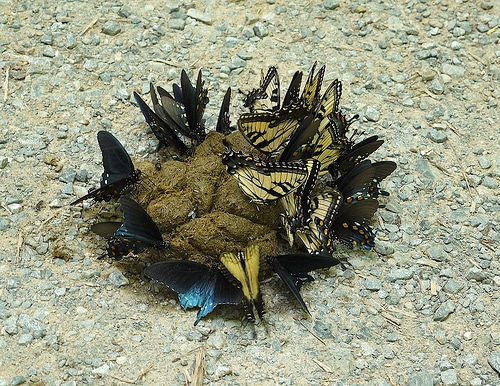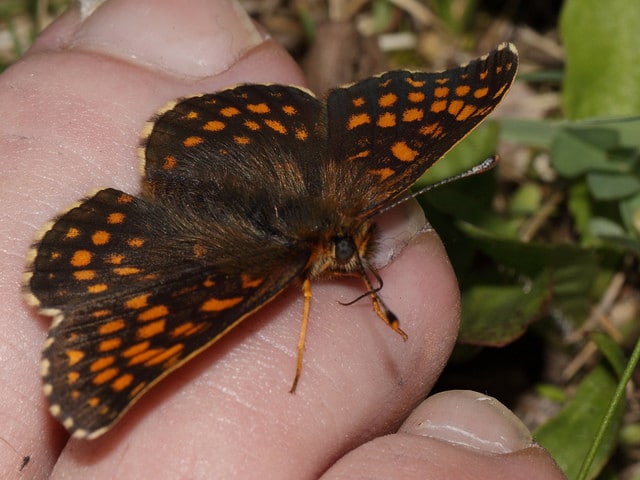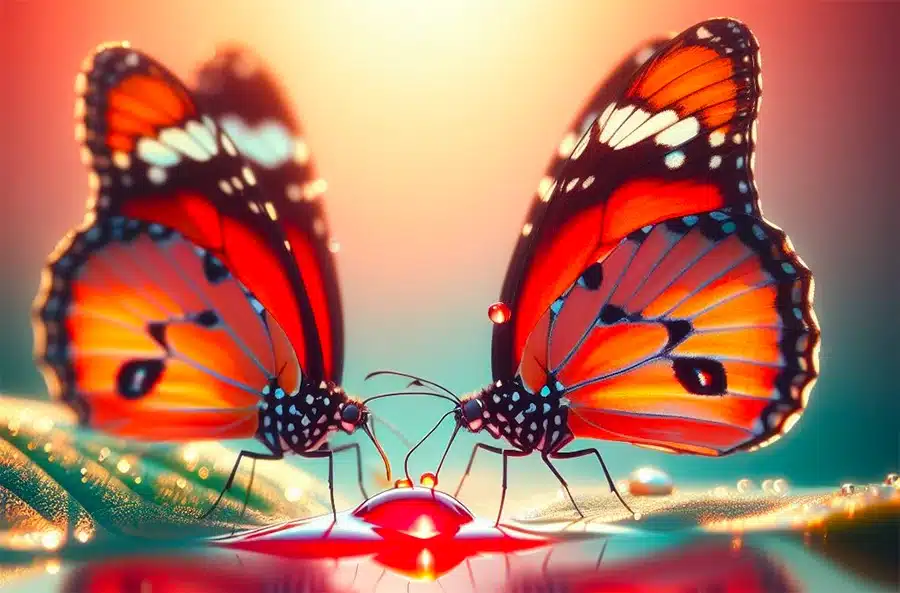Butterflies are among the most delicate and intriguing members of the insect world, celebrated for their vivid colors and graceful flight. Their diet is often assumed to be exclusively sweet and plant-based, as it is popularly associated with sipping...
Butterflies are among the most delicate and intriguing members of the insect world, celebrated for their vivid colors and graceful flight. Their diet is often assumed to be exclusively sweet and plant-based, as it is popularly associated with sipping nectar from flowers. Contrary to this common belief, however, butterflies have shown an opportunistic nature in supplementing their diets, and exhibit a diverse range of feeding behaviors.
Equipped with a long feeding tube known as a proboscis, butterflies are capable of ingesting various liquids to satisfy their nutritional needs – and may at times resort to unconventional sources to obtain essential minerals and nutrients.
You see, there’s something about butterflies that most people don’t know, and it can be a little disturbing.
Unusual Feeding Habits of Butterflies
Butterflies do typically prefer nectar as their primary source of sustenance, but they can also be attracted to other substances.
Mud-Puddling
Puddling, or mud-puddling, is a behavior observed in many butterfly species, who seek out nutrients unavailable in their typical nectar-based diet. They are often seen gathering at mud puddles (which often include a mix of substances such as rotting plant matter) or on animal excrement (ie, feces), sipping on the liquids to extract minerals and salts like sodium.
Mud-puddling is primarily an activity of male butterflies, as the sodium and amino acids they gather are crucial for reproductive success. The nutrients collected during mud-puddling are passed to the female along with the sperm during mating, bolstering the viability of their eggs.

Butterflies Drink Tears and Sweat
Butterflies can be attracted to tears because they contain salts and proteins crucial for butterfly nutrition.
Besides tears, butterflies may also consume other animal fluids, such as sweat or urine, to obtain necessary nutrients unavailable in their usual diet.
Butterflies Can Drink Blood
While nectar from flowers remains a primary food source, butterflies will occasionally utilize atypical sources when necessary. This sometimes includes even blood.
That’s right, Butterflies have been demonstrated to ingest animal blood (including human blood), when available. Such behavior can be seen in all butterfly species, but is particularly noted in lycaenidae and skipper butterflies.
However, it must be clarified that butterflies do not possess the anatomy or mechanism to bite or prey on animals; they are not equipped with mandibles for biting or teeth for chewing. Their foraging for blood is opportunistic, not predatory. When they access blood, it is from passive sources, not through the act of biting.
Blood contains a significant amount of sodium and glucose, two essential dietary blocks for most butterflies. When butterflies are seen on blood, it’s for the minerals, not to derive proteins as is the case with vampiric species.
Just try not to think about this the next time one of these beautiful creatures lands on your shoulder…

Do Butterflies Bite?
It is a common misconception that butterflies can bite in order to drink blood, like mosquitoes. In reality, butterflies do not have teeth and are not equipped to bite. The proboscis, their long, straw-like tongue, is designed for sipping nectar, not for piercing skin. However, this misconception may stem from rare instances where butterflies are observed on carrion or feeding from puddles that might contain blood from other sources.
Unlike mosquitoes with specialized mouthparts for blood-feeding, butterflies use their proboscis—a long, straw-like tongue—to sip on various liquids.
So you can rest easy, there simply aren’t any blood sucking butterflies capable of inflicting a bloody wound on a human or animal.
There is, however, a species of moth that will actually bite you to extract the red stuff, and is appropriately named the Vampire Moth (Calyptra thalictri).
Frequently Asked Questions

Are butterflies attracted to blood?
Butterflies can be attracted to blood as well as other liquids that contain essential minerals and salts. This is particularly true when other sources of these nutrients are scarce. They are attracted to blood for its rich mineral content (but not to derive proteins as is the case with vampiric species).
Is there a blood-sucking butterfly?
There is no butterfly species that actively sucks blood like a mosquito. While butterflies may land on blood, they do not have the anatomy required for hematophagy – the ingestion of blood by piercing the skin.
Do butterflies drink blood?
It has been documented that butterflies may drink from blood puddles or spills to obtain necessary minerals, but it is not their preferred source of nutrients.
Do butterflies bite?
Butterflies do not have the mouthparts to bite. They are equipped with a proboscis, a long, straw-like tongue adapted for sipping nectar, not for biting or piercing skin.














